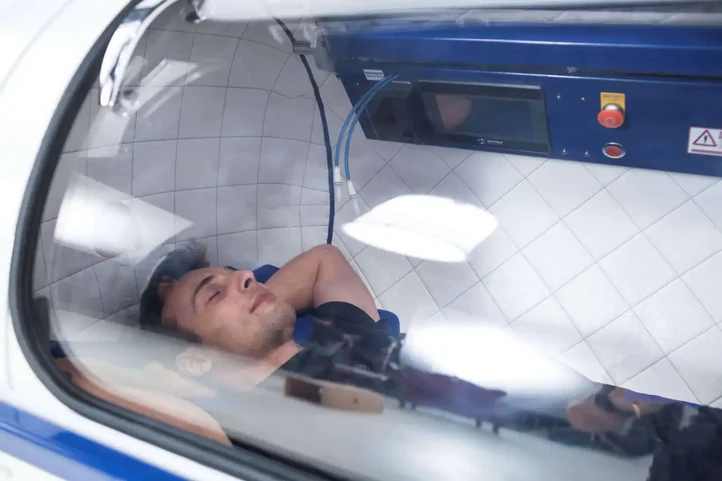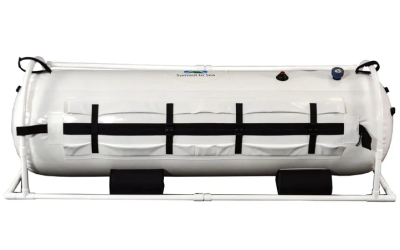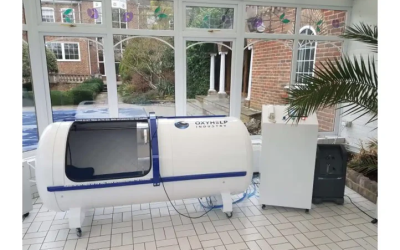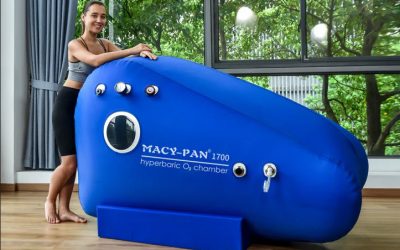The Role of Oxygen in Hyperbaric Chambers
- Oxygen Delivery: In hyperbaric chambers, oxygen is the star player. These chambers are designed to deliver a higher oxygen concentration to the body than we typically breathe in our everyday lives. Increasing the pressure within the chamber and supplying pure oxygen can enhance the body’s ability to absorb and utilize this vital gas. This increased oxygen delivery can have a range of beneficial effects on our health and well-being.
- Improved Healing: One of the primary uses of hyperbaric chambers is wound healing. When a person enters the chamber, the heightened oxygen levels promote the growth of new blood vessels and help fight off infections. This can accelerate the healing process for wounds that are slow to mend, such as diabetic ulcers or certain injuries caused by radiation therapy. Additionally, the boosted oxygen levels stimulate the production of collagen, a crucial protein necessary for tissue repair.
- Oxygen and Brain Function: The brain is an organ that relies heavily on oxygen to function optimally. In cases where a person has suffered from a traumatic brain injury or stroke, hyperbaric chambers can offer substantial benefits. The increased oxygen levels can help reduce swelling, promote tissue regeneration, and potentially minimize long-term disabilities. Oxygen is an essential nutrient for the brain, and hyperbaric chambers provide an environment supporting healing and recovery.
- Diving Into Decompression Sickness: Have you ever heard of divers getting the bends? This condition, or decompression sickness, occurs when nitrogen bubbles form in the bloodstream due to a rapid ascent from a deep dive. Hyperbaric chambers can treat this condition by increasing the pressure within the chamber, effectively compressing these bubbles and allowing them to dissolve harmlessly back into the body’s tissues. Oxygen plays a key role in this process, facilitating the safe exit of nitrogen into the body.
- Other Applications: While wound healing and decompression sickness are the most well-known uses of hyperbaric chambers, these versatile devices have several applications. They can aid in the treatment of certain infections, carbon monoxide poisoning, and radiation injuries and even assist in the management of chronic conditions like fibromyalgia. Oxygen’s ability to support proper cell function and accelerate healing makes hyperbaric chambers an invaluable resource for various medical conditions.
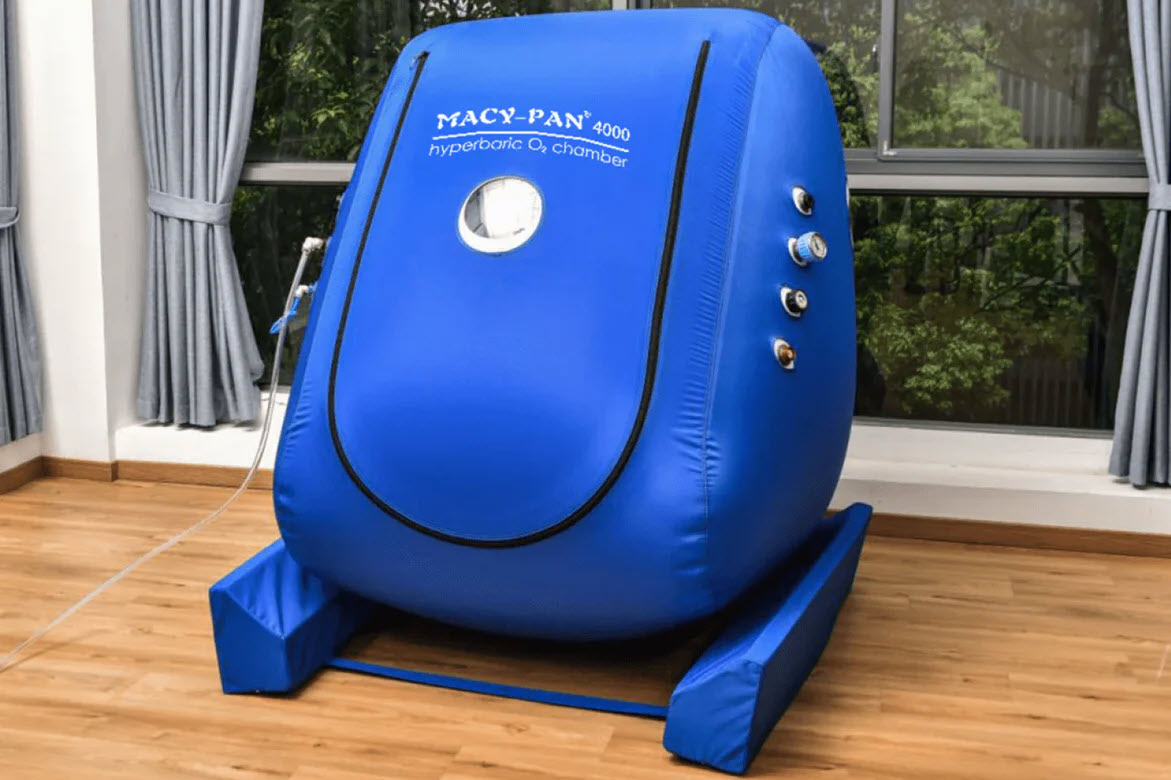
Oxygen Levels Inside a Hyperbaric Chamber
Hyperbaric oxygen therapy involves increasing the air pressure inside the chamber, allowing the body to absorb higher oxygen levels than normal. This extra oxygen can be very beneficial for various medical conditions.
When you’re inside the hyperbaric chamber, you’ll feel an improvement in the oxygen supply to your body’s tissues. This can enhance the healing of wounds, promote the growth of new blood vessels, and reduce swelling.
It’s important to note that hyperbaric oxygen therapy is generally safe, but like any medical treatment, it may have some side effects. The most common side effect is barotrauma, which occurs when the change in pressure causes damage to your ears or sinuses. However, this is easily preventable by equalizing the pressure in your ears during the session.
In rare cases, some people may experience oxygen toxicity, which can cause seizures or lung damage. However, these incidents are extremely uncommon, and the benefits of hyperbaric oxygen therapy usually outweigh the risks.
How 100% Oxygen is Delivered.
Hyperbaric oxygen therapy (HBOT) delivers 100% oxygen to people inside a hyperbaric chamber. This therapy is used for various medical conditions such as hyperbaric oxygen therapy hair growth and involves specific steps to ensure oxygen delivery at the right concentration.
This therapy uses two types of hyperbaric chambers: monoplane and multi-place chambers. In a monoplace chamber, you liele bed. On the other hand, a multiple chamber can accommodate various people, like a small room.
To begin the delivery process, you will wear a soft, transparent hood over your head. This hood is connected to an oxygen source, ensuring you breathe 100% oxygen. It’s crucial to wear this hood during the therapy session to ensure you receive oxygen efficiently.
Once inside the chamber, the pressure gradually increases. This process is called compression. The increase in pressure creates an environment where your body can absorb more oxygen. You might feel a slight “popping” sensation in your ears, similar to during a flight takeoff or landing.
Once the desired pressure is reached, you can relax and enjoy the therapy. The high concentration of oxygen helps your body heal and repair itself. The therapy session lasts a specific time, usually 60 to 120 minutes, depending on your condition.
After the therapy session, the pressure gradually decreases, a process known as decompression. This allows your body to adjust to atmospheric pressure without discomfort or harm.
Differences Between Normal and Hyperbaric Oxygen
As you might already know, normal oxygen is the oxygen we breathe daily. It’s essential for survival, allowing our cells to perform their functions and keeping us going. Hyperbaric oxygen therapy, on the other hand, takes things up a notch. It involves breathing in pure oxygen in a pressurized environment, typically in a specialized chamber.
The increased pressure in the hyperbaric chamber allows oxygen to be dissolved in greater concentrations in your body’s fluids. More oxygen is delivered to your tissues and organs, providing various benefits. But what exactly are these benefits, you may ask?
Well, let’s start with enhanced repair and regeneration. The increased oxygen concentration stimulates the production of new blood vessels, promoting tissue healing and accelerating the recovery process. In addition, hyperbaric oxygen therapy boosts energy generation, giving you a natural energy boost from within.
Another vital effect of hyperbaric oxygen therapy is its ability to suppress inflammation. Oxygen has anti-inflammatory properties, and by increasing its concentration, hyperbaric oxygen therapy helps calm inflammation and reduce swelling.
So, how does all of this happen? It’s all thanks to something called dissolved oxygen in plasma. This dissolved oxygen acts as a transporter, carrying oxygen throughout your body and delivering it to your tissues. This is how hyperbaric oxygen therapy increases the amount of oxygen available for your body, resulting in all those incredible physiological effects.
Breathing 100% Oxygen in a Hyperbaric Chamber
When you step inside a hyperbaric chamber, the air pressure is significantly higher than normal—it can be 1.5 to 3 times higher! This increased pressure allows your body to absorb more oxygen, which has numerous health benefits.
Now, let’s talk about breathing. Inside the hyperbaric chamber, you’ll be equipped with a mask or hood through which you’ll breathe. This mask is connected to a pure oxygen supply. As you inhale, the oxygen-rich air fills your lungs, delivering more oxygen to your body’s tissues. This can help promote healing, reduce inflammation, and enhance overall well-being.
Three main types of hyperbaric chambers are available: monoplane, multiple, and mild chambers. Monoplace chambers are designed for a single person and are usually transparent. They allow you to lie down comfortably while receiving the therapy. Multiplace chambers, on the other hand, can accommodate several individuals at once. Lastly, mild chambers are portable devices for mild hyperbaric oxygen therapy sessions.

Who Can Benefit from Breathing 100% Oxygen?
- Enhancing Wound Healing: If you or someone you know is struggling with slow-healing wounds, hyperbaric oxygen therapy (HBOT) may offer a solution. Exposing wounds to increased oxygen levels stimulates the body’s natural healing process, promoting tissue repair and growth. This therapy is particularly effective for individuals with conditions like diabetic foot ulcers, radiation tissue damage, and slow-healing surgical wounds. HBOT assists in increasing oxygen delivery to these areas, which aids in fighting infection, reducing inflammation, and promoting faster healing. The simplicity and effectiveness of this treatment make it a valuable tool in wound management.
- Combating Decompression Sickness: Have you ever wondered how deep-sea divers prevent decompression sickness, commonly known as “the bends”? Hyperbaric chambers play a crucial role here. When divers ascend too quickly, nitrogen bubbles form in their tissues and blood, leading to painful symptoms. By breathing 100% oxygen at elevated pressure, these chambers help eliminate the excess nitrogen, allowing individuals to recover safely and quickly. Hyperbaric oxygen therapy also treats scuba diving accidents, promoting healing and relieving associated symptoms like joint pain, dizziness, and numbness.
- Managing Carbon Monoxide Poisoning: In cases of carbon monoxide poisoning, hyperbaric chambers offer a lifeline. Carbon monoxide has a stronger affinity for binding to hemoglobin than oxygen, reducing oxygen transport throughout the body. Hyperbaric oxygen therapy helps minimize the risks associated with carbon monoxide poisoning by rapidly displacing the toxic gas from the bloodstream and increasing oxygen levels. This treatment can prevent severe organ damage and neurological complications, ensuring a full recovery for those affected.
- Alleviating Radiation Side Effects: Radiation therapy is a common treatment for cancer but can sometimes lead to side effects in nearby tissues. Hyperbaric oxygen therapy has been shown to diminish these effects, as it increases the level of oxygen delivered to irradiated tissues. By regulating inflammation and vascular function, HBOT assists in alleviating pain, promoting the growth of new blood vessels, and reducing radiation-induced injury. Patients undergoing radiation therapy for head and neck cancer or pelvic malignancies can greatly benefit from this therapy, improving their quality of life during and after treatment.
Medical Conditions Treated with HBOT
Hyperbaric Chambers (HBOT) are specialized medical devices that treat various conditions. By using pressure, these chambers can deliver a higher oxygen concentration to the body, promoting healing and aiding in recovery.
HBOT has been FDA-approved for several medical conditions due to extensive research and positive outcomes. One condition often treated is non-healing wounds, such as diabetic foot ulcers or radiation injuries. The increased oxygen levels help stimulate tissue repair and prevent infection, allowing these wounds to heal more effectively.
Carbon monoxide poisoning is another medical condition that can be effectively treated with HBOT. The therapy helps to remove the carbon monoxide from the body and supply adequate oxygen levels, reducing the risk of long-term damage.
Severe infections, like necrotizing soft tissue or certain bone infections, can also benefit from HBOT. The added oxygen can enhance the immune response, improve antibiotic effectiveness, and aid in healing damaged tissues.
Additionally, HBOT has shown promise in treating conditions such as decompression sickness (the bends), radiation therapy tissue damage, and crush injuries.
Athletes and Performance Enhancement
The concept behind hyperbaric therapy is fairly simple. Athletes are placed in a pressurized chamber, breathing in pure oxygen. This high-pressure environment allows the oxygen to dissolve into the blood and reach areas of the body that need repair. By increasing the amount of oxygen delivered to injured tissues, hyperbaric therapy accelerates the healing process, allowing athletes to recover faster and get back into the game sooner.
But it’s not just about injuries. Hyperbaric therapy also offers several benefits for athletes looking to improve their performance. By increasing oxygen levels in the body, this therapy helps to reduce fatigue, boost energy levels, and improve endurance. This means that athletes can push their limits further and maintain their peak performance for longer.
Many professional sports teams and individual athletes have recognized and incorporated hyperbaric therapy’s incredible benefits into their training regimens. For example, elite soccer players have used hyperbaric treatment to aid in their recovery from muscle injuries. In contrast, boxers have used it to enhance their stamina and endurance in the ring.
Anti-Aging and Wellness Applications
One key way HBOT works its magic is by reducing inflammation. Inflammation is a natural response that helps the body heal, but it can cause many health issues when it becomes chronic. By exposing your body to high oxygen levels in a pressurized chamber, HBOT reduces inflammation and promotes a healthier, more vibrant you.
Another incredible benefit of HBOT is its ability to strengthen the immune system. As you may know, a strong immune system is crucial for fighting off illnesses and staying healthy. By increasing the amount of oxygen available to your body, HBOT supercharges your immune system and helps it function at its best.
But that’s not all – HBOT also enhances mitochondrial function. Mitochondria are the tiny powerhouses inside your cells that produce energy. By providing your cells with abundant oxygen, HBOT ensures that your mitochondria are firing on all cylinders, giving you more energy and vitality.

